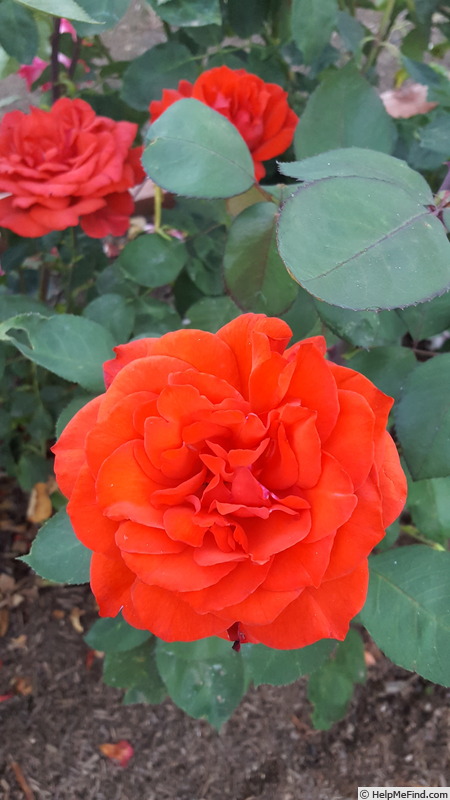|
|

Photo courtesy of Northland Rosarium
HMF Ratings:
20 favorite votes.
Average rating:
EXCELLENT-.
ARS:
Orange or orange-red Hybrid Tea.
Registration name: Gypsy (hybrid tea, Swim & Weeks, 1972)
Exhibition name: Gypsy
Bloom:
Orange or orange-red. Mild, spice fragrance. Average diameter 4". Large, full (26-40 petals), high-centered to cupped bloom form. Blooms in flushes throughout the season.
Habit:
Tall, upright, well-branched. Large, semi-glossy, dark green foliage.
Height: 4' to 5' (120 to 150cm).
Growing:
USDA zone 7b through 10b. Can be used for cut flower or garden. Vigorous. flowers drop off cleanly. heat tolerant. Disease susceptibility: disease resistant, very mildew resistant. Spring Pruning: Remove old canes and dead or diseased wood and cut back canes that cross. In warmer climates, cut back the remaining canes by about one-third. In colder areas, you'll probably find you'll have to prune a little more than that. Requires spring freeze protection (see glossary - Spring freeze protection) .
Patents:
United States - Patent No: PP 3,163 on May 1972 VIEW USPTO PATENTThe present invention relates to a new and distinct variety of rose plant of the hybrid tea class, which was originated by us by crossing an unnamed and unpatented rose seedling derived from a cross of ['Happiness' (Plant Patent No. 911) x 'Chrysler Imperial' (Plant Patent No. 1,167] x 'El Capitan' (Plant Patent No. 1,796), with the variety 'Comanche' Plant Patent No. 2,855 ), said unnamed seedling being the seed parent and 'Comanche' being the pollen parent.
Notes:
Slightly different parentages given in the registration and the patent.
|